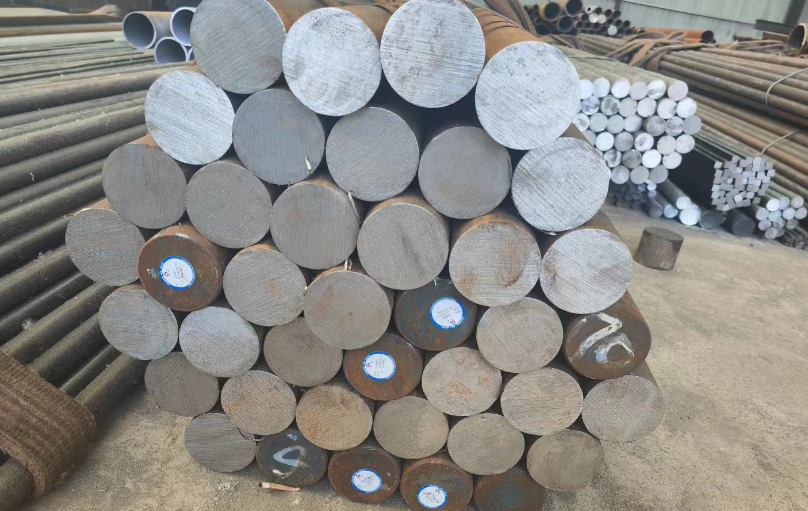Tool steel, a crucial category of metal materials, holds a pivotal position in the manufacturing industry due to its unique properties and diverse applications. This article delves into the 7 types of tool steel and their applications.

7 Types of Tool Steel and Their Applications
1. Carbon Tool Steel
Carbon tool steel, characterized by its high carbon content ranging from 0.65% to 1.35%, belongs to the sub-eutectoid, eutectoid, or hypereutectoid steel categories. Its high carbon content ensures excellent hardness and wear resistance after heat treatment, while the core maintains good toughness. However, its red hardness is relatively poor, and its quenching properties limit its use in larger tools. Despite these limitations, carbon tool steel finds applications in manufacturing tools that require moderate hardness, wear resistance, and toughness, such as forging dies, chisels, hammers, punches, and metal cutting tools.
2. Alloy Tool Steel
Alloy tool steel, an extension of carbon tool steel, incorporates alloying elements such as chromium, molybdenum, vanadium, tungsten, and cobalt to enhance its properties. These additions improve the steel’s hardenability, wear resistance, and heat resistance. Alloy tool steel is further classified into cold work, hot work, plastic mold, and other specialized types, each tailored for specific applications.
- Cold Work Tool Steel: Designed for applications where high hardness, wear resistance, and dimensional stability are paramount, cold work tool steel is often used in the manufacture of dies, punches, and shear blades.
- Hot Work Tool Steel: Hot work tool steel exhibits excellent strength, toughness, and resistance to thermal fatigue at elevated temperatures. It is the preferred choice for forging dies, extrusion dies, and hot stamping dies.
- Plastic Mold Tool Steel: Plastic mold tool steel must possess high hardness, wear resistance, and corrosion resistance to withstand the demands of plastic molding. It finds applications in the production of injection molds and compression molds.
3. High-Speed Steel (HSS)
High-speed steel, a type of high-alloy tool steel, owes its name to its ability to maintain cutting performance at high speeds. Its composition, rich in elements like tungsten, molybdenum, chromium, vanadium, and cobalt, gives it exceptional hardness, wear resistance, and red hardness. HSS is widely used in the manufacturing of cutting tools such as drills, taps, and end mills for metalworking applications.
4. Oil-Hardening Tool Steel
Oil-hardening tool steel, as indicated by its name, undergoes hardening in oil rather than water. This steel type offers good hardenability and dimensional stability, making it suitable for applications requiring precise dimensions. Common applications include the production of dies, punches, and gauges.
5. Air-Hardening Tool Steel
Air-hardening tool steel achieves its hardness through air cooling after heating. It exhibits excellent dimensional stability and high hardness, making it a preferred choice for precision tools. Dies, punches, and shear blades are typical applications for this steel type.
6. Shock-Resisting Tool Steel
Shock-resisting tool steel is designed to withstand high-impact loads without breaking or deforming. Its high toughness and moderate hardness make it suitable for applications such as hammers, punches, and dies for impact forming.
7. Stainless Tool Steel
Stainless tool steel combines the properties of stainless steel and tool steel, providing excellent corrosion resistance along with good hardness and wear resistance. This steel type finds applications in environments where corrosion is a concern, such as in the food processing and medical industries.
Conclusion
In conclusion, the diverse types of tool steel offer a wide range of properties to cater to the specific needs of various industrial applications. From carbon tool steel to stainless tool steel, each type possesses unique characteristics that make it suitable for a particular purpose. Understanding the properties and applications of these tool steel types is crucial for selecting the most appropriate material for a given application, ensuring optimal performance and durability.
Thank you for reading our article and we hope it can help you to have a better understanding of the 7 types of tool steel and their applications. If you are looking for tool steel suppliers and manufacturers online now, we would advise you to visit Huaxia Steel.
As a leading supplier of tool steel from Shanghai China, Huaxia Steel offers customers high-quality tool steel products at a very competitive price.







